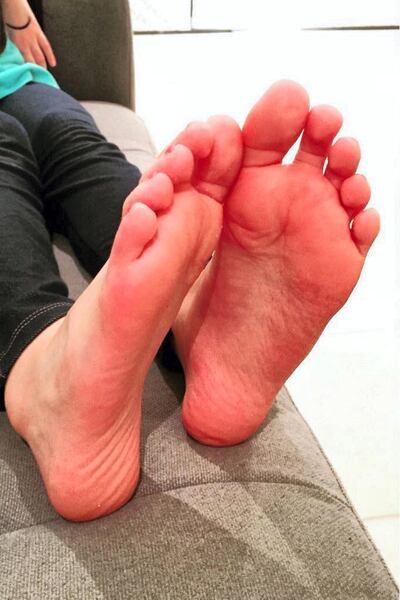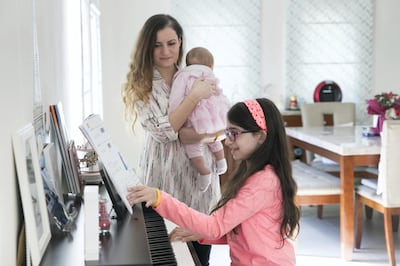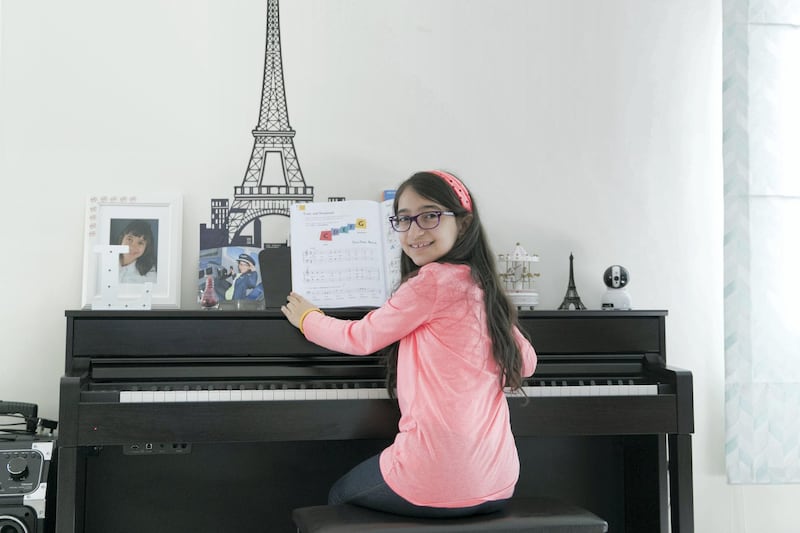During her worst episodes, Lebanese schoolgirl Lynn Ghaziri feels her hands, feet and head are on fire - a near-unbearable burning pain caused by a rare genetic disorder.
She is one of the few children to suffer from a condition so rare it often goes undiagnosed.
Erythromelalgia causes a burning sensation in the hands and feet, one that baffles many doctors who are often at a loss as how to treat it.
More common in older people, Lynn's condition will get progressively worse and, because of the pain she suffers at night, her lack of sleep forced her parents Ziad and Youmna to take Lynn out of school.
Lynn, 10, who lives in Dubai, is determined to make the most of her condition by helping others to recognise the symptoms and to get a correct diagnosis.
Ziad Ghaziri first became aware his daughter was unwell two years ago, shortly after her eighth birthday.

“One evening, she began screaming out in pain as her feet were burning,” he said.
“I have a nursing background so thought it could be an allergy. It was getting worse so we called the doctor and then took her into hospital.
“She was given antihistamines and then cortisone. We went home but the pain continued.”
The family went back and forth to specialists in the UAE but said no doctor was able to identify her condition.
Lynn’s mother, Youmna, took photos of the reactions during a flare-up to show doctors in the US and Canada, who recognised the burning hands and feet and inflammation as possible erythromelalgia.
The family learned there is no cure and little knowledge of why it is caused.
“We were linked to Massachusetts Hospital in Boston where there was a specialist physician in this condition,” Mr Ghaziri said.
“We decided to take Lynn to see a doctor there, but couldn’t get an appointment until five months later.
“It was important to have the file of her recent flare-ups, as she looks like a normal kid otherwise.”
Lynn must wear loose, light clothing and open shoes. She also gets very tired and can’t walk long distances so she has an electric wheelchair.
The family cannot go home to Lebanon in summer as it is too hot, and cannot visit relatives in Canada as it is too cold.
Activity, stress and extremes of temperature cause Lynn’s hands and feet to burn, so summer in Dubai is also a challenge.

Spicy food, garlic, onion, spinach and watermelon are other triggers, as vassal dilators cause the blood to flow faster through the body.
Lynn’s parents struggle to control her pain by using ice packs or anti-inflammatory creams.
The condition is thought to affect about one in 100,000 in the US and fewer in the UAE.
Lynn, who is now schooled at home, has had to swap ballet for music because of the pain in her feet and has started a social media campaign called the Red Hand Challenge to help spread the word of erythromelalgia, also known as the "man on fire" syndrome.
"It feels like I'm holding fire in my hands," Lynn told The National. "It's like there are pins and needles sticking into me, it can last up to an hour and is very painful.
“I like the wheelchair as I don’t need anyone to push me, but It’s kind of weird as people aren’t very considerate. People look at me differently; it can be embarrassing.”
____________
Read more:
[ Children with neurological disorders respond positively to rehabilitation programme new to UAE ]
[ Innovation in science sector helps tackle rare diseases in Middle East ]
[ Couples advised to be screened for genetic illness 50 times more frequent in GCC than in US ]
_______________
Attacks happen every night, making it difficult for her to sleep.
“We use ice gel packs for her, but it is recommended she doesn’t use them a lot as they can damage nerves,” said Mrs Ghaziri.
Lynn is registered in an online educational programme as home schooling was the only option for her. She studies in the afternoon and evening.
“We want to help other people with this condition who may not know what they have,” Mrs Ghaziri said.
“Doctors are telling people this is all in their head, and it is not being diagnosed properly. I’ve had so much support from other people around the world who have had this experience.
“It should be picked up by a neurologist, and there is a growing online support. We want to help educate doctors here in the UAE and show this condition exists here.”
Mrs Ghaziri has started an online campaign, encouraging people to print a red hand and post it on social media to show support for Lynn’s #RedHandChallenge.
Reading is an escape for the bubbly young girl, particularly mystery and adventure books and she has read more than 200 in the last year.
She has started her own library for her neighbours and the community to encourage other children to read, and learn more about her condition.
“People don’t hide their reactions, they just see the chair and don’t see me for who I am,” said Lynn.
“I miss being around a lot of kids who are my age.”







